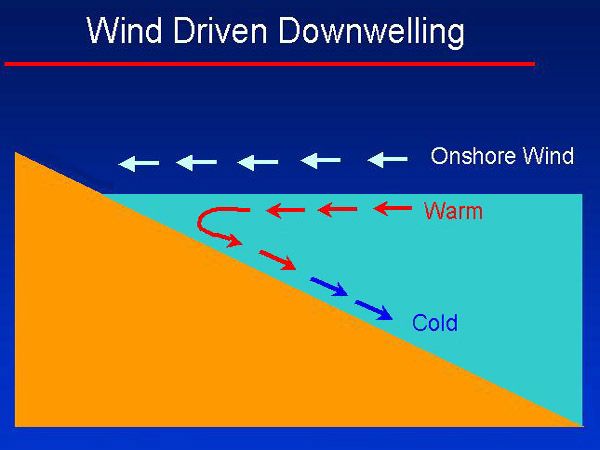-
 CITEPA
CITEPA
-
 Computer virus
Computer virus
-
 Esker
Esker
-
 Rosetta
Rosetta
-
 Ester bond
Ester bond
-
 Riveting
Riveting
-
 Alter Eco
Alter Eco
-
 Vagina
Vagina
-
 Substitution
Substitution
-
 Half-duplex
Half-duplex
-
 Oxidised substance
Oxidised substance
-
 Invasive
Invasive
-
 Oligohaline water
Oligohaline water
-
 Black hole
Black hole
-
 Epitaxy
Epitaxy
-
 Office automation
Office automation
-
 Baseline
Baseline
-
 Oolitic
Oolitic
-
 Phoenicopteriformes
Phoenicopteriformes
-
 Quasar
Quasar
-
 Americium
Americium
-
 Twilight
Twilight
-
 Blu-Ray
Blu-Ray
-
 Autotrophism
Autotrophism
-
 Fistula
Fistula
-
 Luminance
Luminance
-
 Endocrine system
Endocrine system
-
 Nuptial plumage
Nuptial plumage
-
 Robot
Robot
-
 Maser
Maser
Downwelling
Downwelling is the inverse phenomenon of upwelling.
In fact, when two bodies of water (or air, or rock, since the phenomenon exists in the atmosphere and the lithosphere) meet, they only mix superficially. The denser mass (high salinity, cold) plunges under the lighter mass (lower salinity, warm) creating a water current that moves downwards. Sometimes, the two bodies of water plunge in unison.
Zones where these bodies of water meet are called convergence zones.
Coastal downwelling
A downwelling phenomenon can also occur along the coast, under the effects of the wind.
Two cases are possible:
- the wind blows towards the coast, the water accumulates along the coast and plunges along the sea floor to compensate for the influx of surface water;
- the wind blows parallel to the coast and causes a swell current deflected by the Coriolis force towards the right in the Northern Hemisphere, and towards the left in the Southern Hemisphere. When this current is directed towards the coast, a compensation current forms and causes downwelling.
With upwelling, downwelling is the engine that drives the conveyor belt of thermohaline circulation.
 Diagram of the formation of coastal downwelling when the wind blows towards the coast. © US Army, Wikimedia public domain
Diagram of the formation of coastal downwelling when the wind blows towards the coast. © US Army, Wikimedia public domain
Latest
Fill out my online form.



